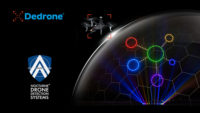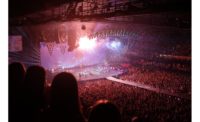
|
Approximately 60 miles southeast of Los Angeles, in the foothills of the Santa Ana Mountains, the National Audubon Society’s Starr Ranch Sanctuary rolls across 4,000 acres. SoCal’s sprawling development is not far from the sanctuary borders, reminding everyone of the critical need to balance development with open spaces. Starr Ranch is part of that balance, preserving nature for its own sake, and providing fertile ground for research and education and a model for conservation.
To influence the way local Californians appreciate, conserve, and manage wild lands, Starr Ranch offers innovative approaches to land management and environmental education, and seeks to instill a love of nature through educational programs and research.
As a private, non-profit organization, Starr Ranch and its parent organization depend on private funding. Encouraging financial support is an ongoing objective at Starr Ranch. Programs and activities that involve and build a fan base from the larger community are essential. One effective way to encourage people to conserve and support nature in general, and Starr Ranch in particular, is by engaging them virtually — with live video of wildlife living on the sanctuary.
Starr Ranch Manager Pete DeSimone enhanced the sanctuary’s website with streaming video of nesting birds, including barn owls, hummingbirds, hawks and black phoebes. Starr Ranch maximizes the viewer experience of the birds’ Nest Cams by using fixed infrared cameras plus moveable PTZ cameras to remotely control the pan, tilt and zoom of the image. So equipped, the sanctuary can cover anything from owls bringing home a midnight snack to chicks taking their first floppy flight. The 24/7 live videos generate hundreds of views daily (and over 50,000 user comments to date in the website’s comments area) and have created a small army of enthusiasts (some might say addicts) who follow every move of the parents and babies. DeSimone says, “We have people who make a habit of getting up in the middle of the night to check in on the birds.”
He found technical solutions to the challenges of monitoring the birds with Supercircuits’ PC185 IR cameras for fixed and low-light views plus moveable PC407PTZ cameras for close-ups and peripheral action. DeSimone, who installed the equipment, explained, “The fixed camera is hardwired using VT-1 transceivers on RG-6 coax cable. The moveable camera also uses VT-1 transceivers, but has a double RG-6 and Cat 5E cable to provide two leads for remote RS485 control. I use PTZ controller software. Software, rather than joystick control, lets me access and control the camera from anywhere there’s an Internet connection.”
The video is processed on a PC using Windows Media Encoder and fed to a host server that can support hundreds of simultaneous viewers. DeSimone, who first heard of Supercircuits from a local surveillance contractor, has bought a variety of cameras and other equipment, and has “yet to find equipment I need unavailable.” He also says that “the tech people are very accessible, and have gone out of their way to explain technical aspects of my installations. I’ve built a relationship with them.”
The first camera went live in 2007 for closed circuit TV viewing of hummingbird and hawk nests. DeSimone activated the Nest Cams in 2008, capturing the birth of barn owls — and the hearts of a small group of initial viewers that soon grew by leaps and bounds. Starr Ranch also runs onsite educational programs, and video enhances the student experience. Trail Cams began recording various non-feathered sanctuary residents in 2004 using Supercircuits’PC161IRHR-2 high resolution color IR cameras and MDVR14 digital video recorders. Located where traffic is likely, the motion-activated cameras record passing creatures such as bobcats and mountain lions to the delight of kids and adults who take part in the programs.
Reliable, sharp video has helped achieve the objective of more and wider participation in Starr Ranch and its mission. Simply put, the website video brings an up-close-and-personal wildlife experience to anyone with an Internet connection. This virtual involvement has increased the community of financial donors and donations for Starr Ranch.
That is one very practical result. Another equally important one has been to nurture “the love of nature” that is part of the Audubon and Starr Ranch mission, and that can ultimately lead to more nature sanctuaries and preserved land.
Last, use of video cameras to record or view live activity not commonly seen contributes to overall knowledge of wildlife behavior. You can view the nest cams or learn more about Starr Ranch at www.starr-ranch.org.
For more information the cameras, visit www.supercircuits.com.









